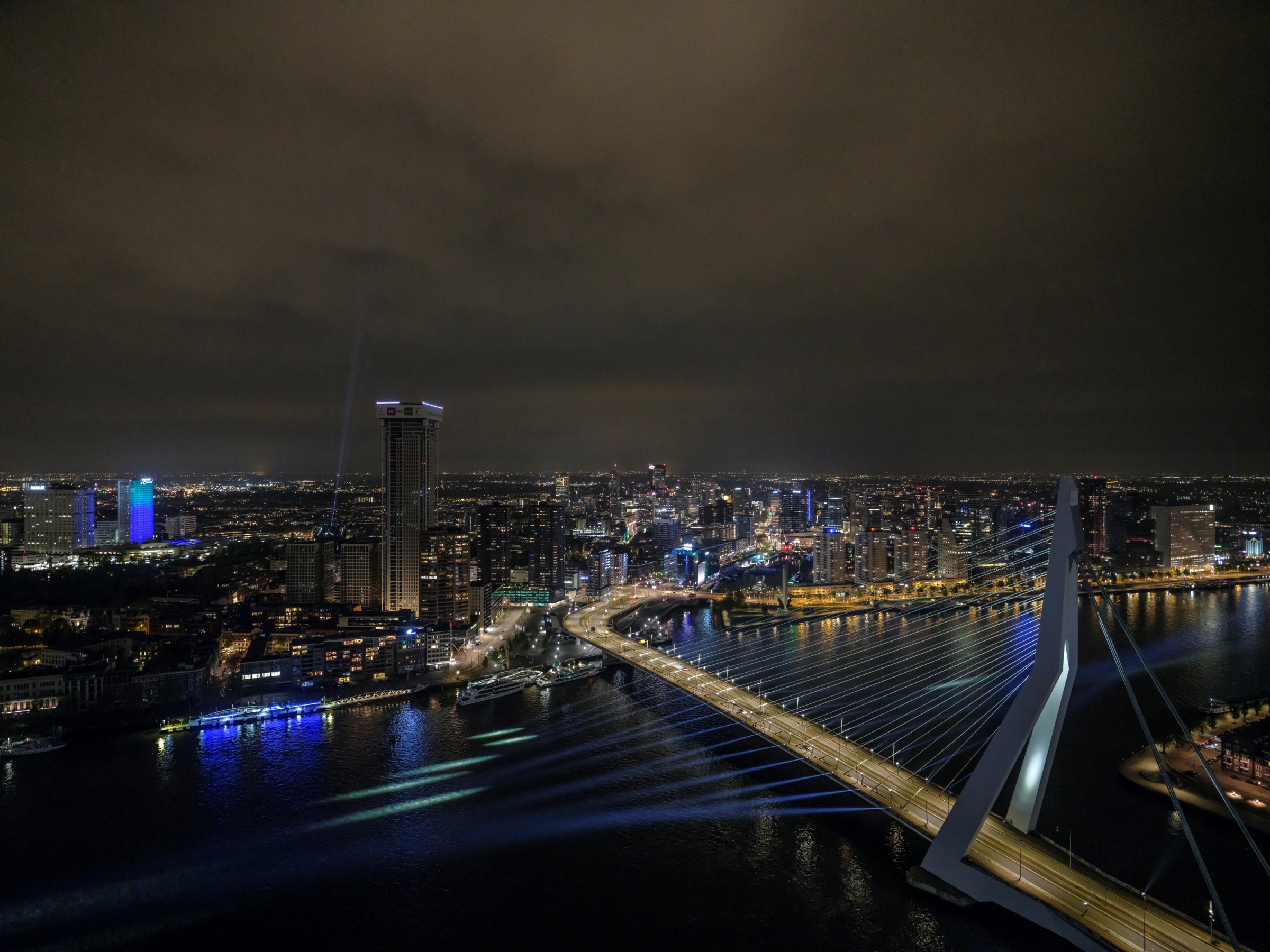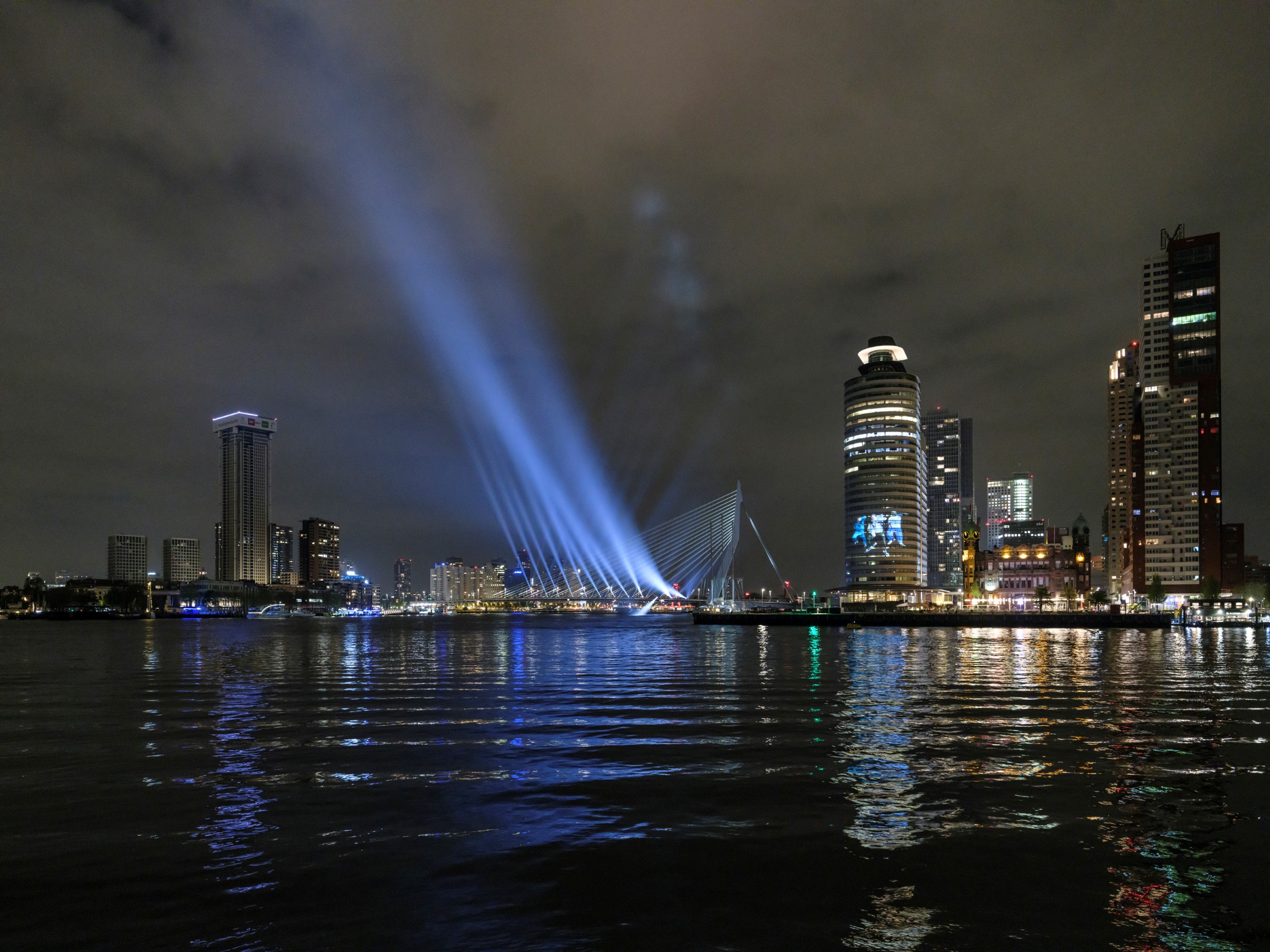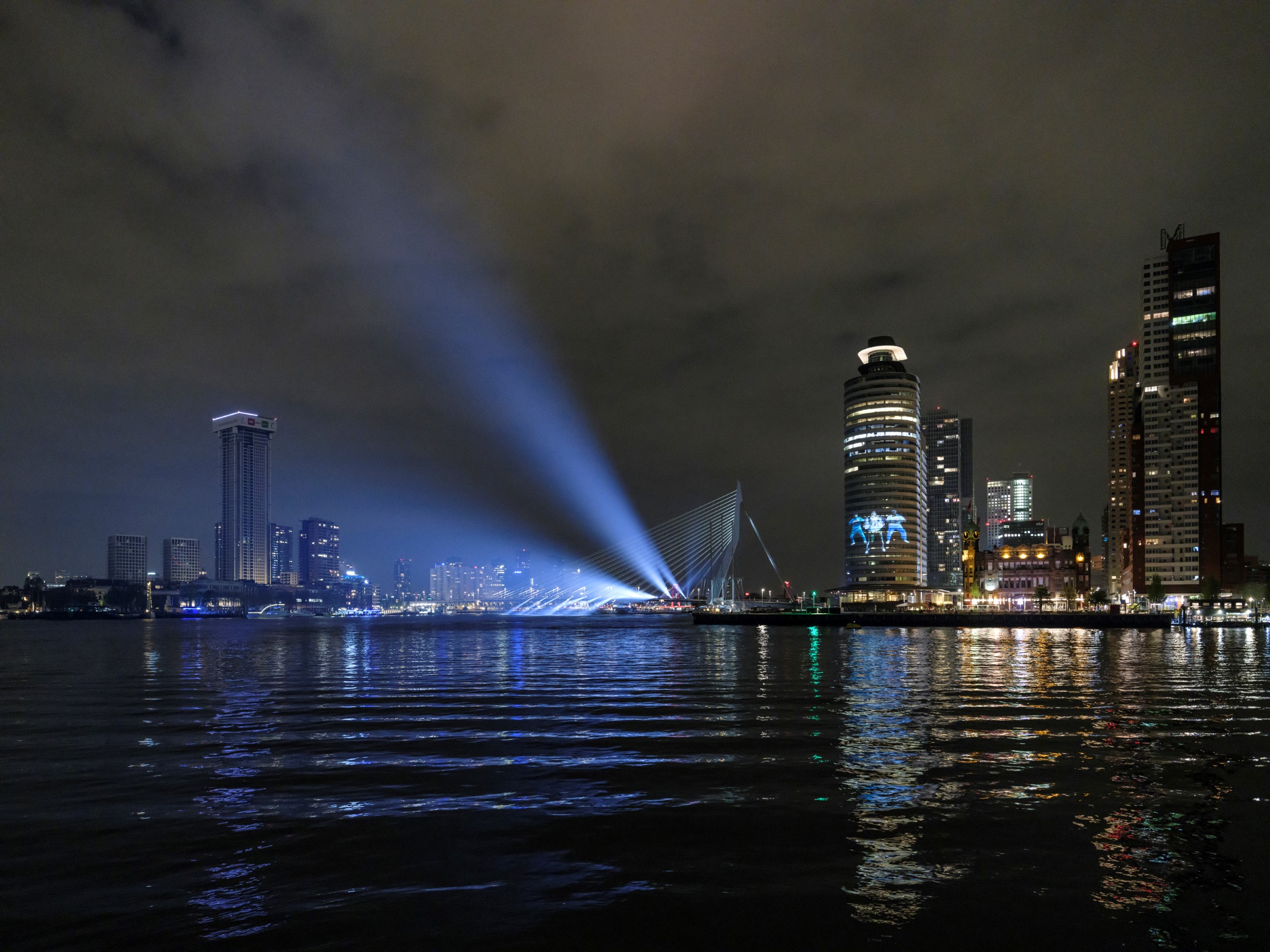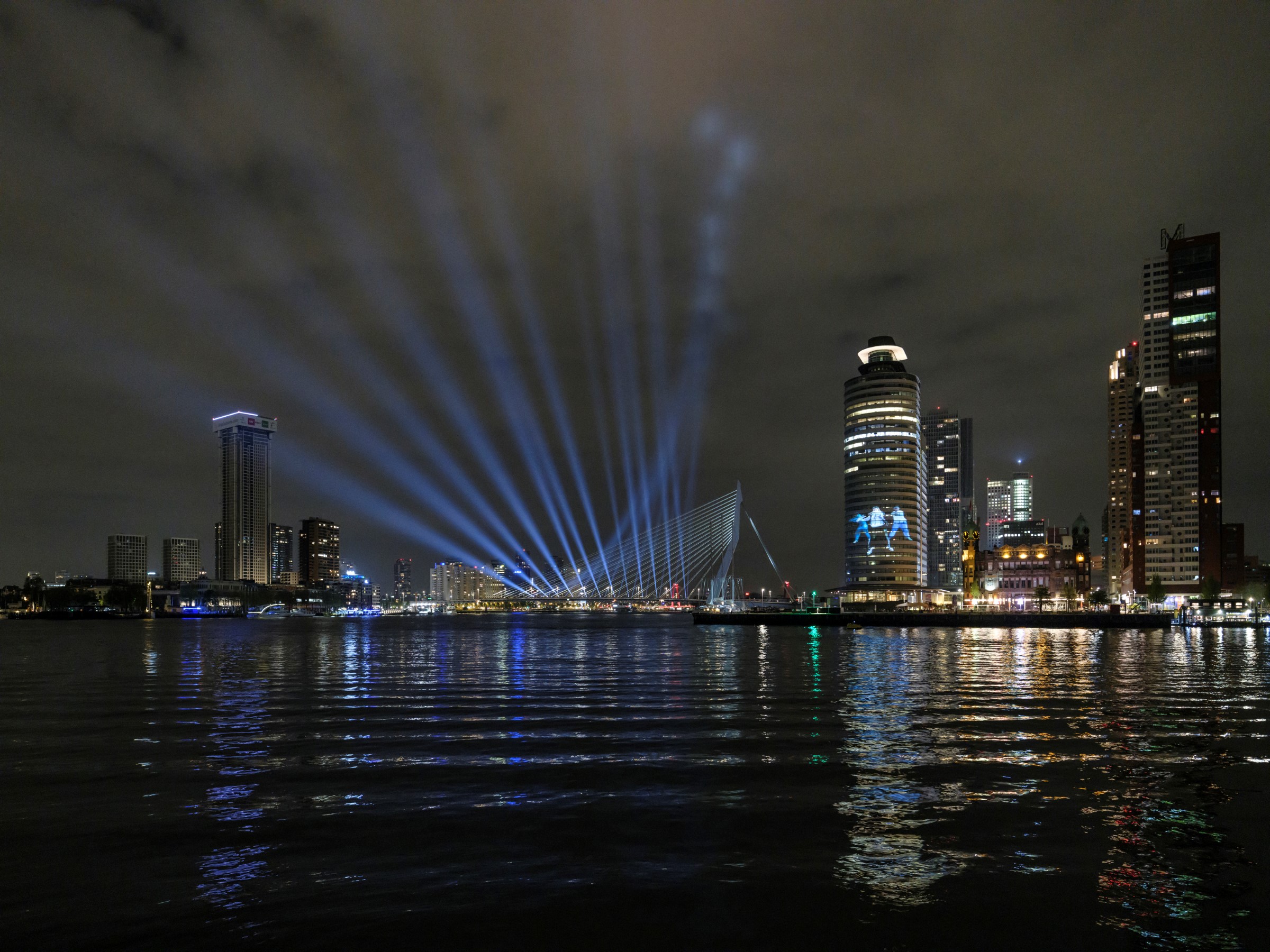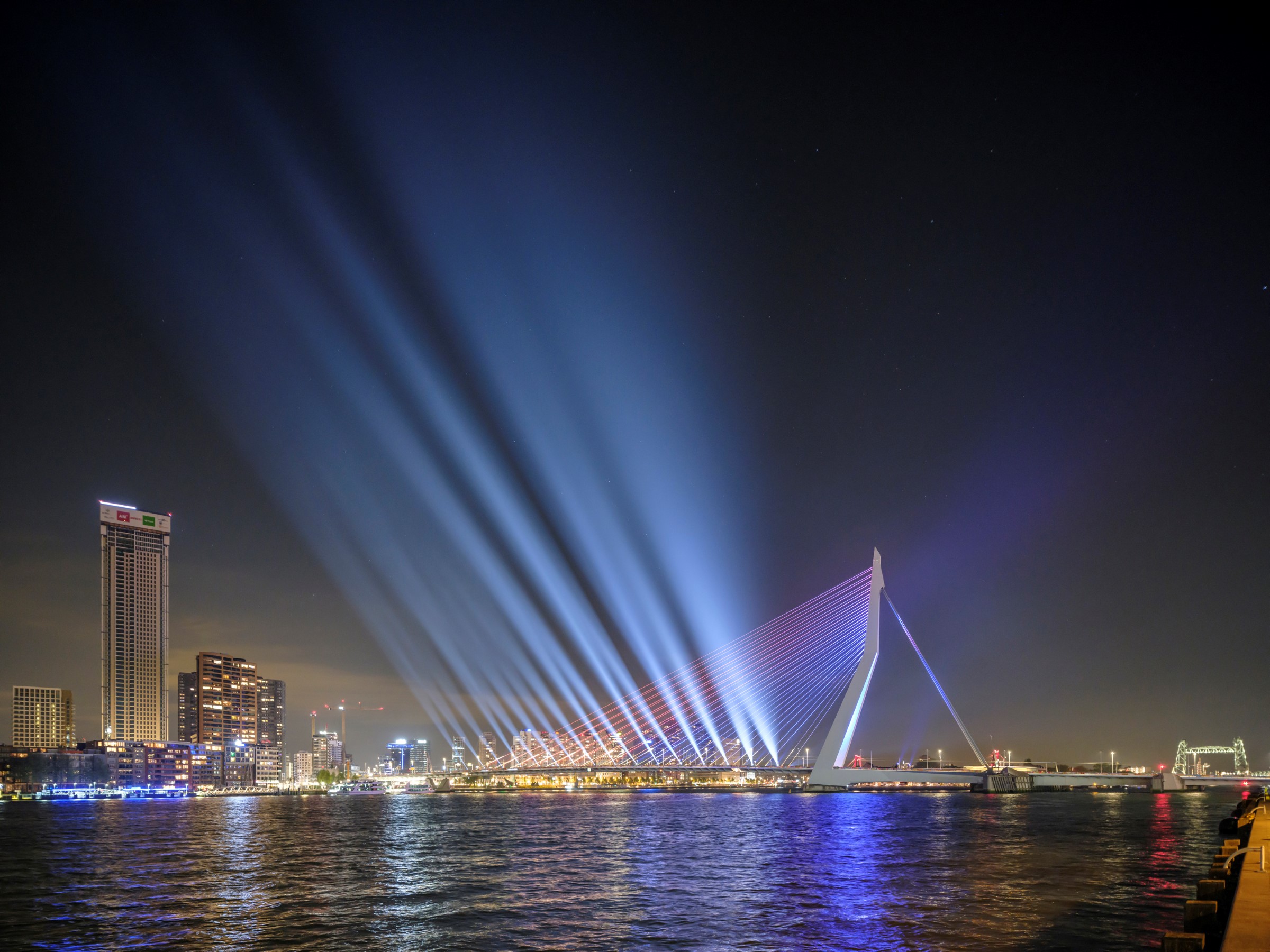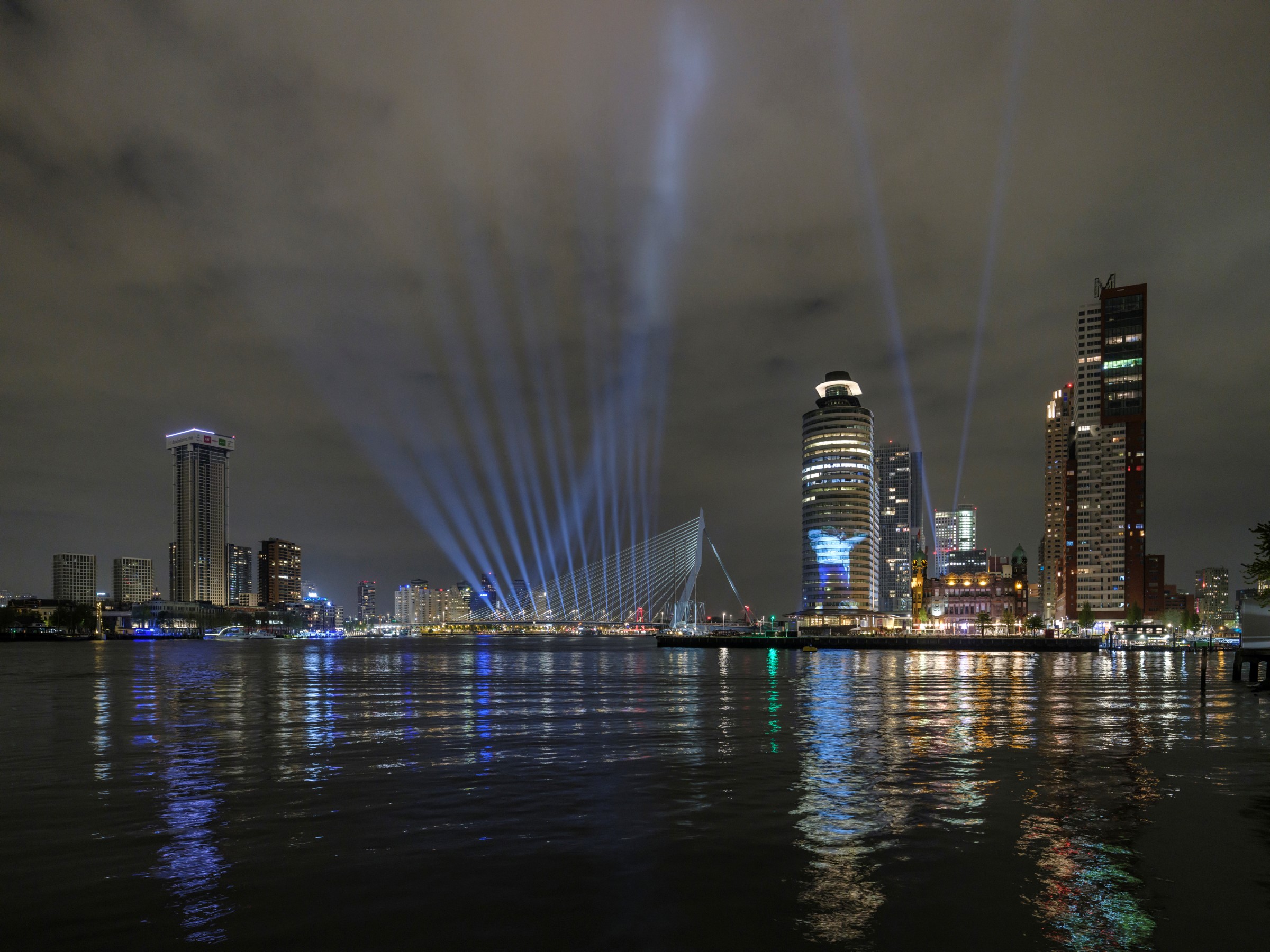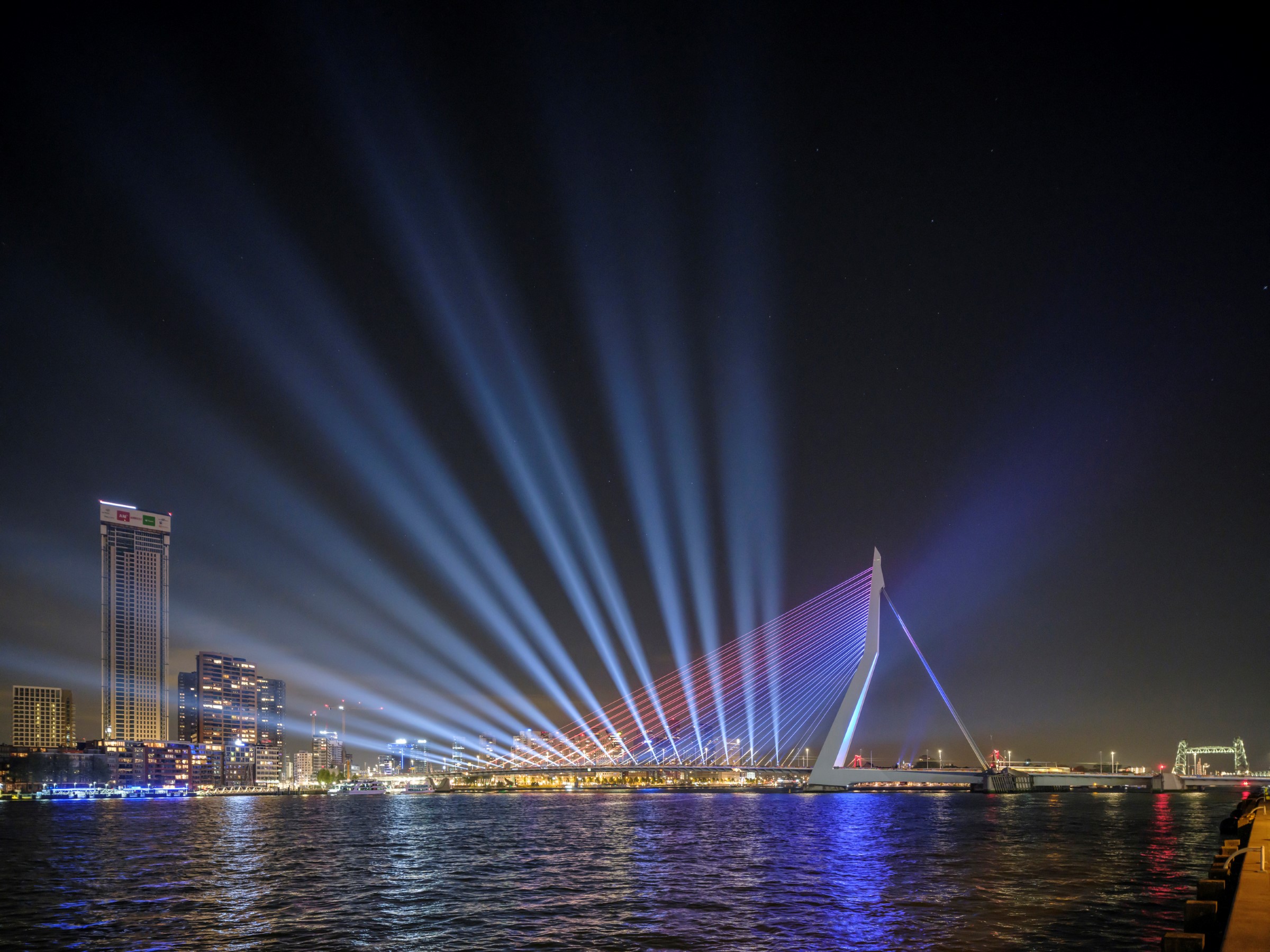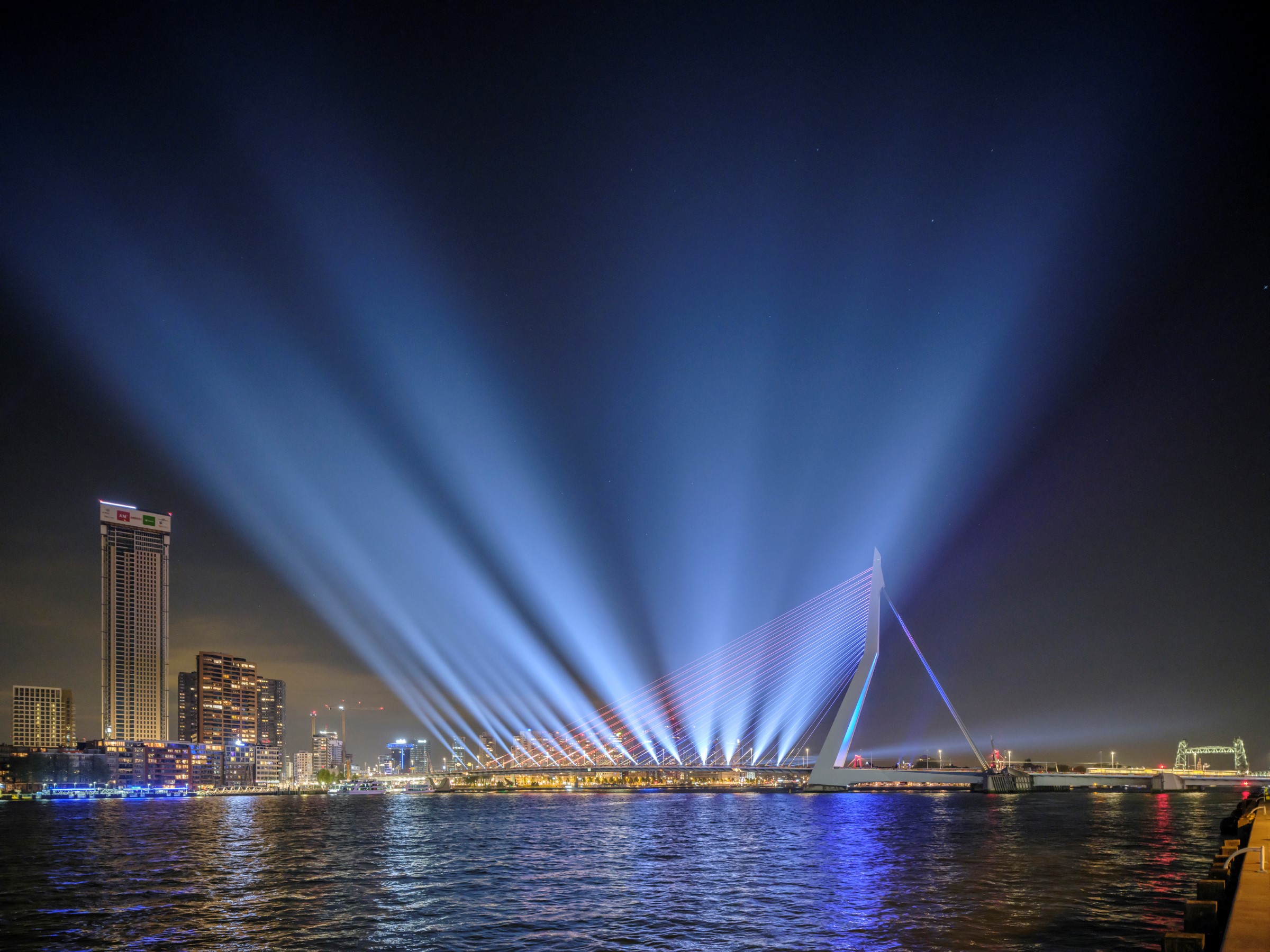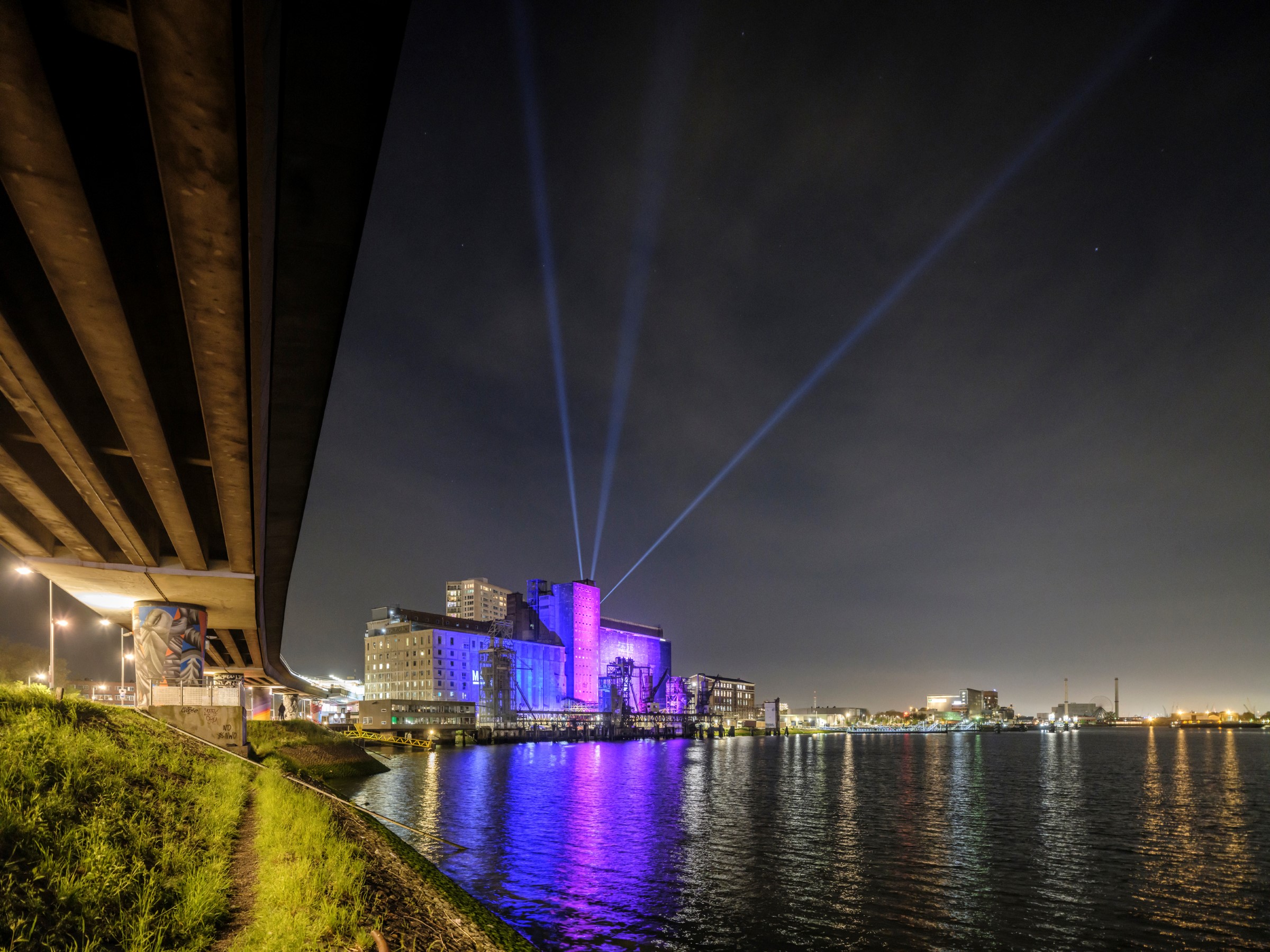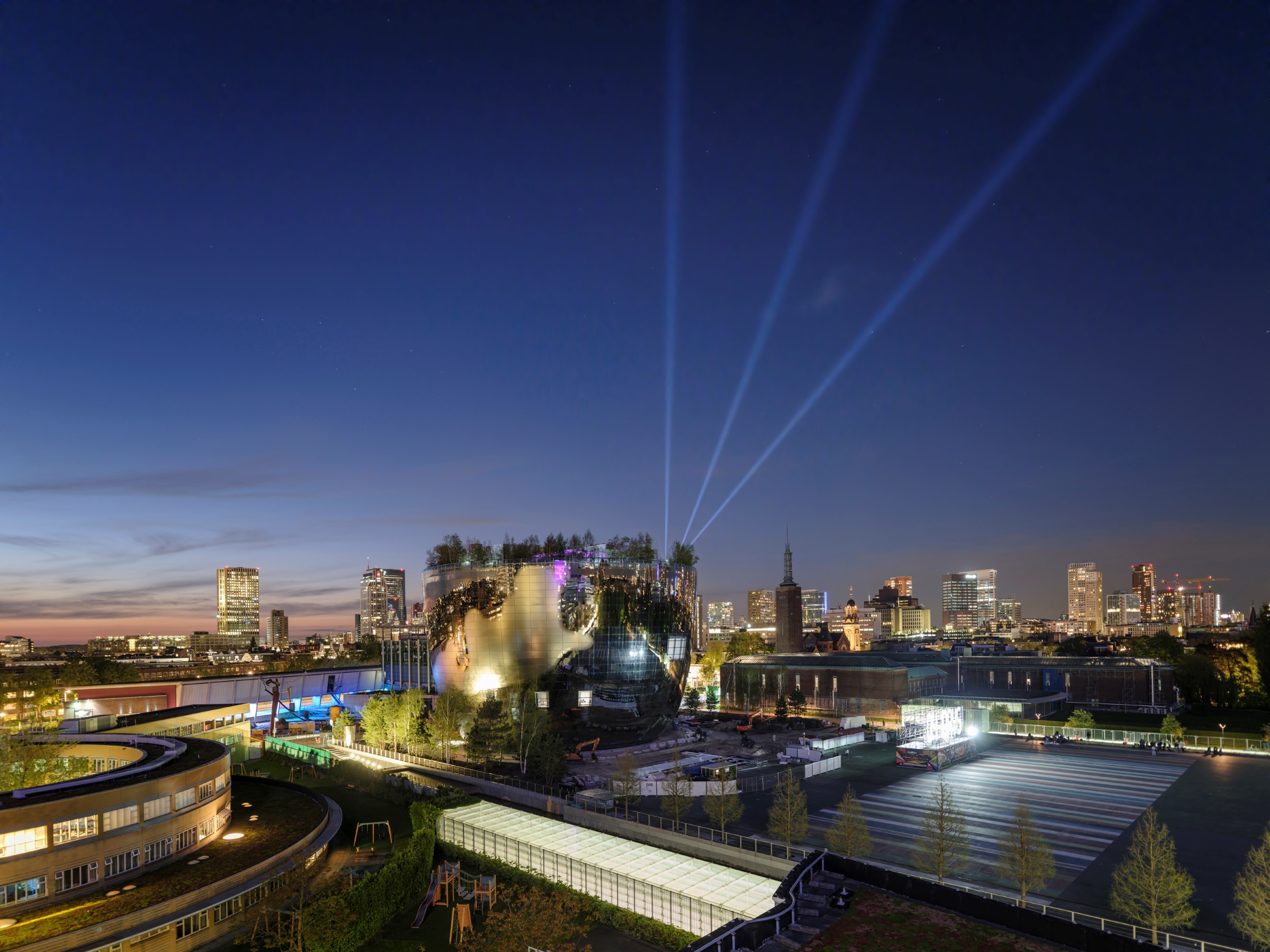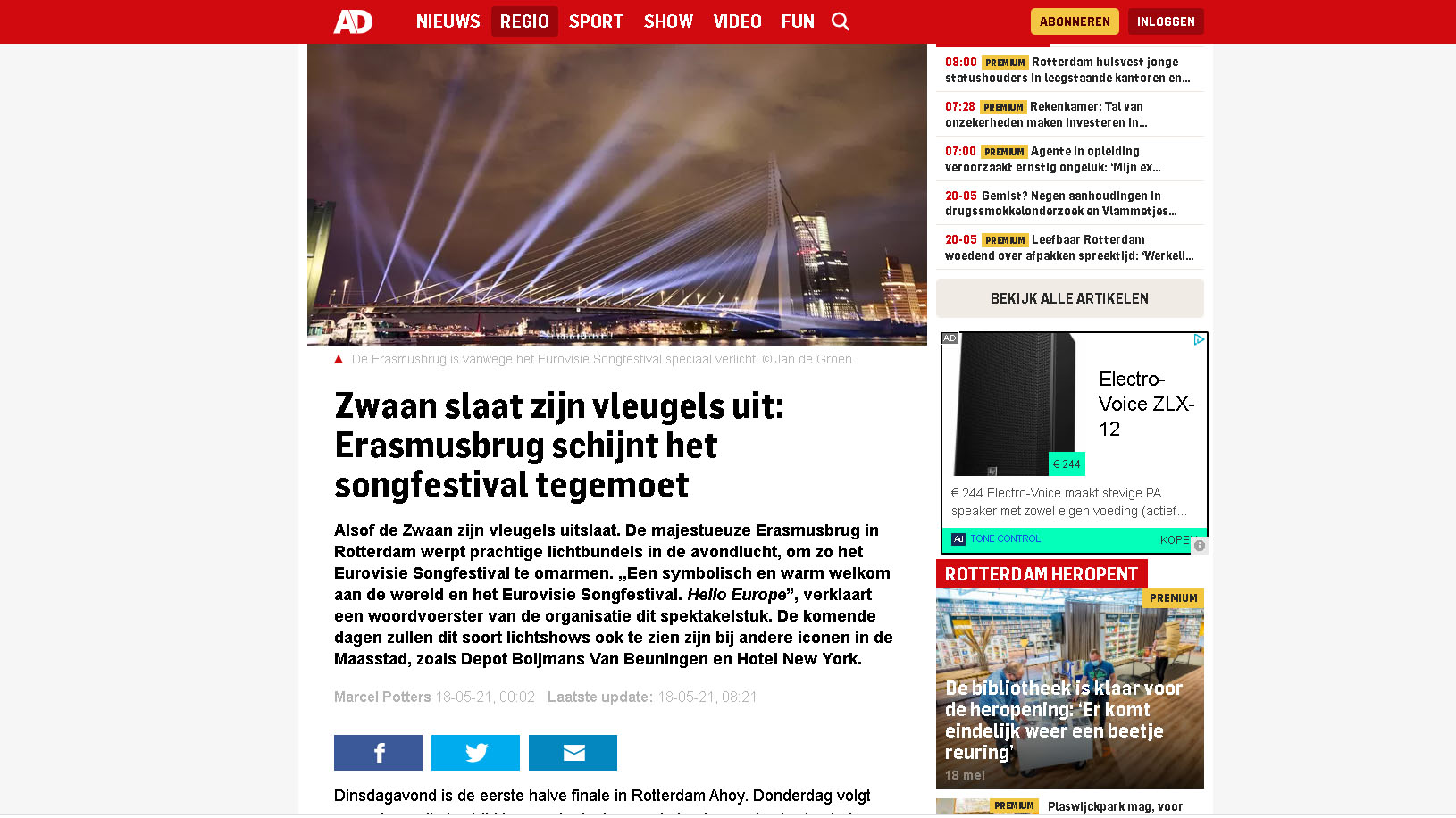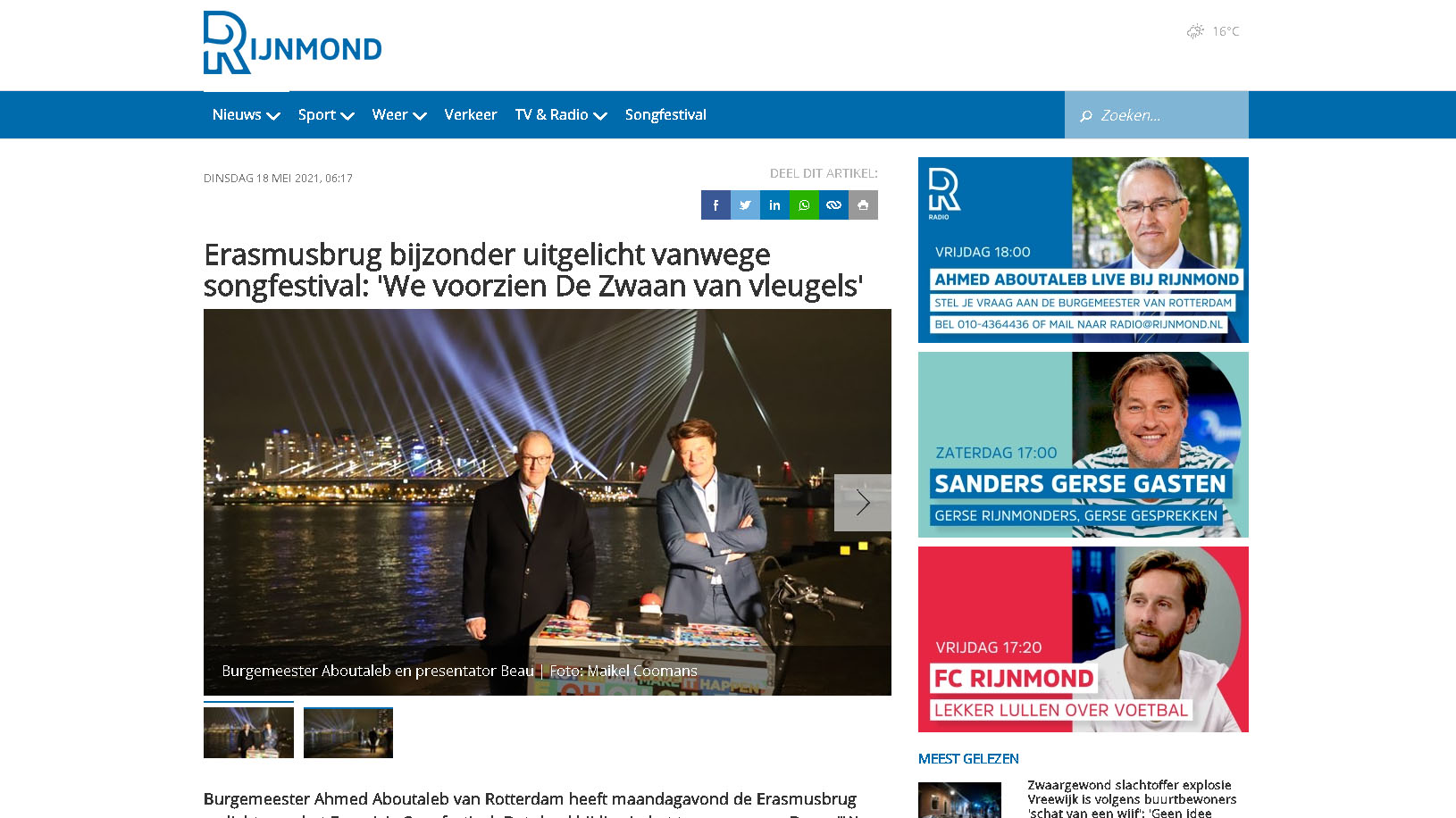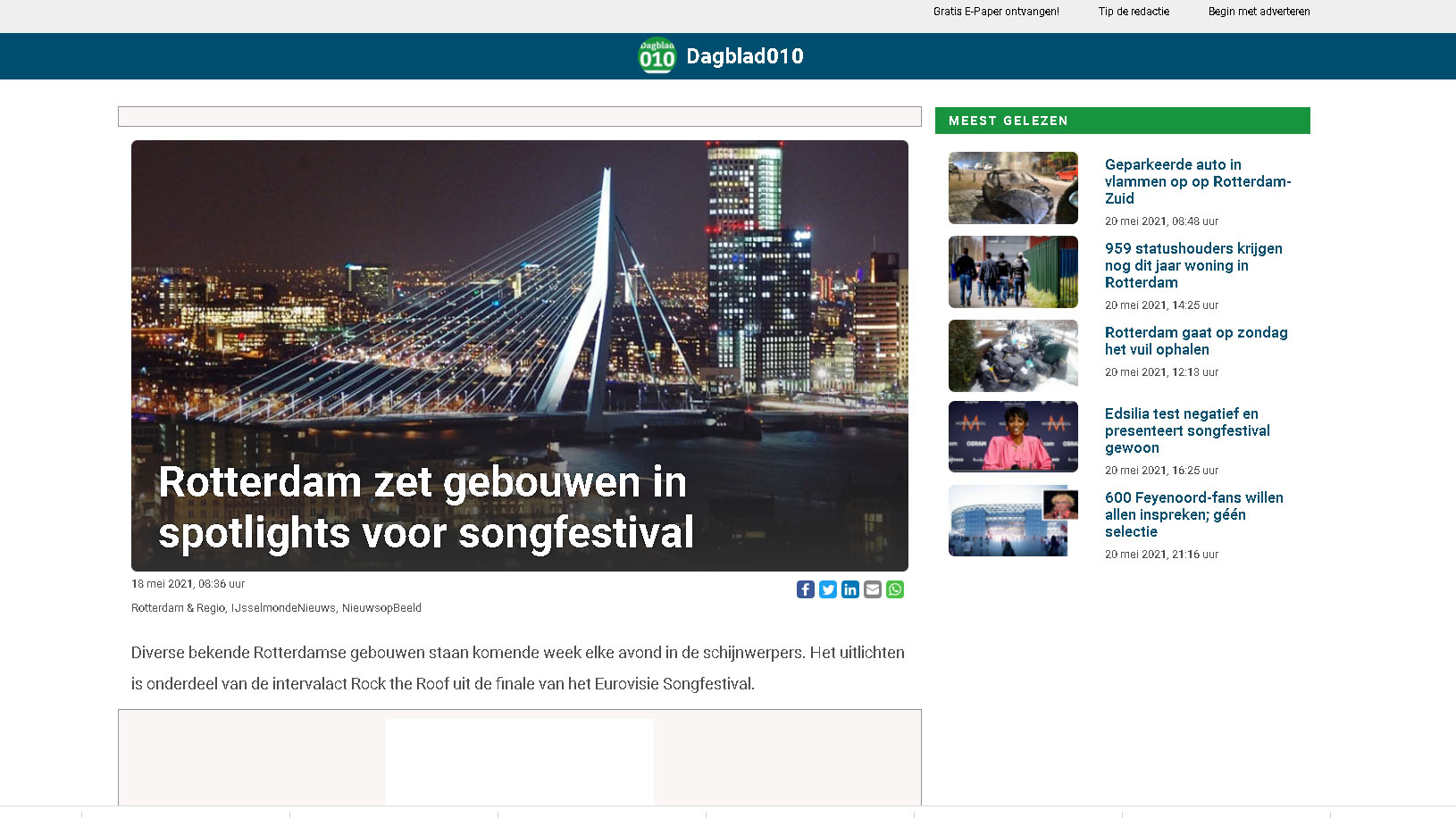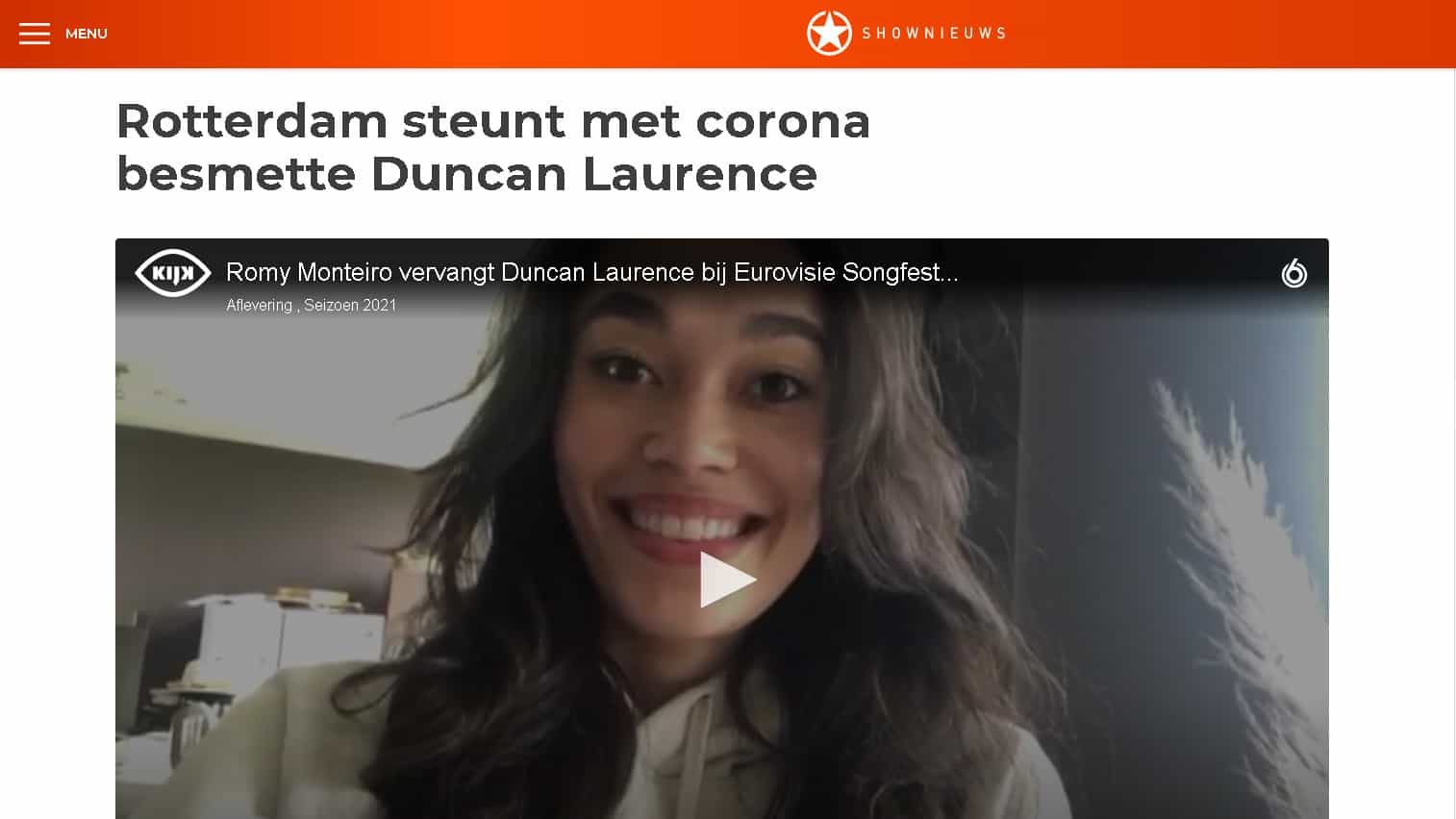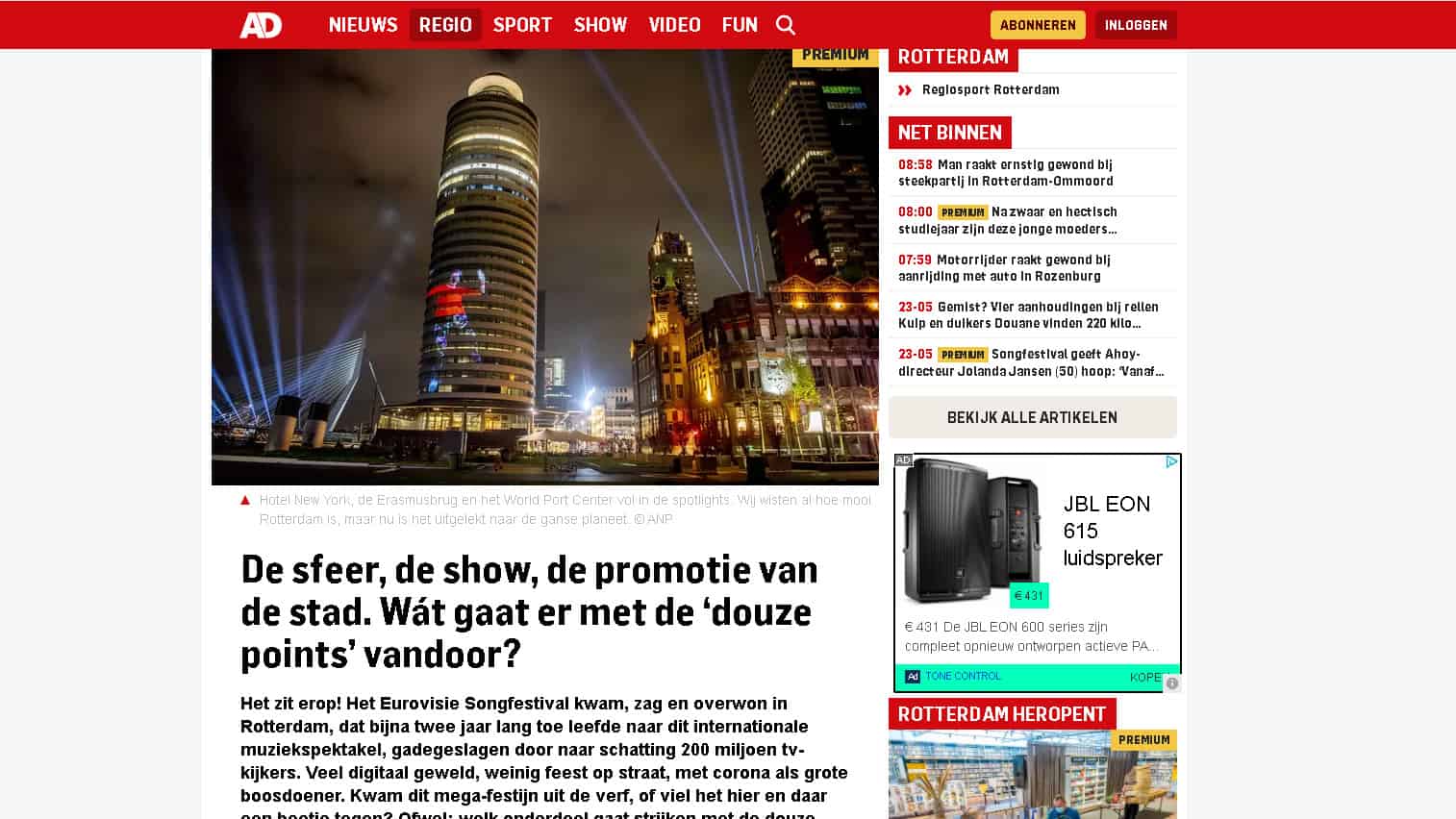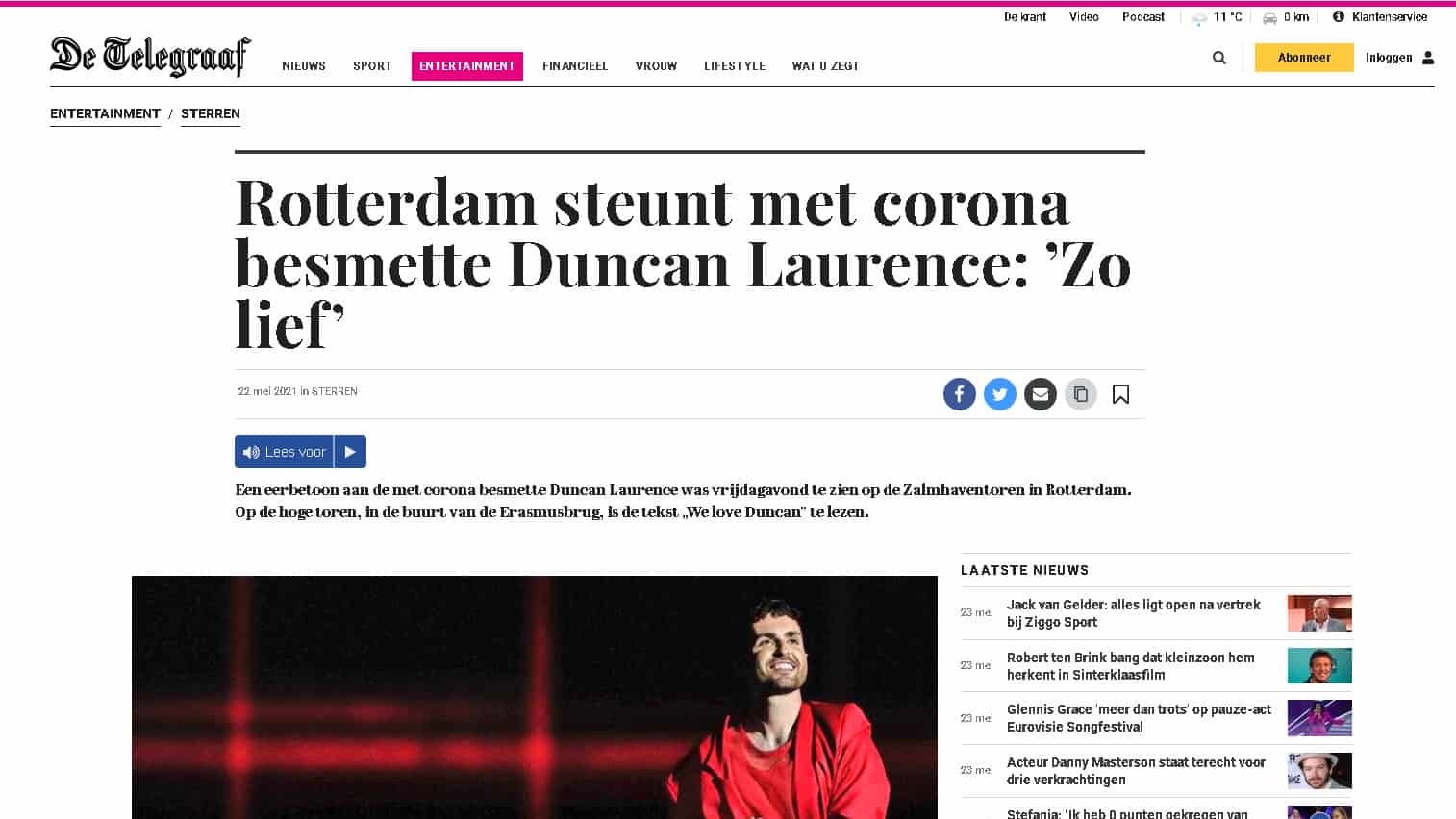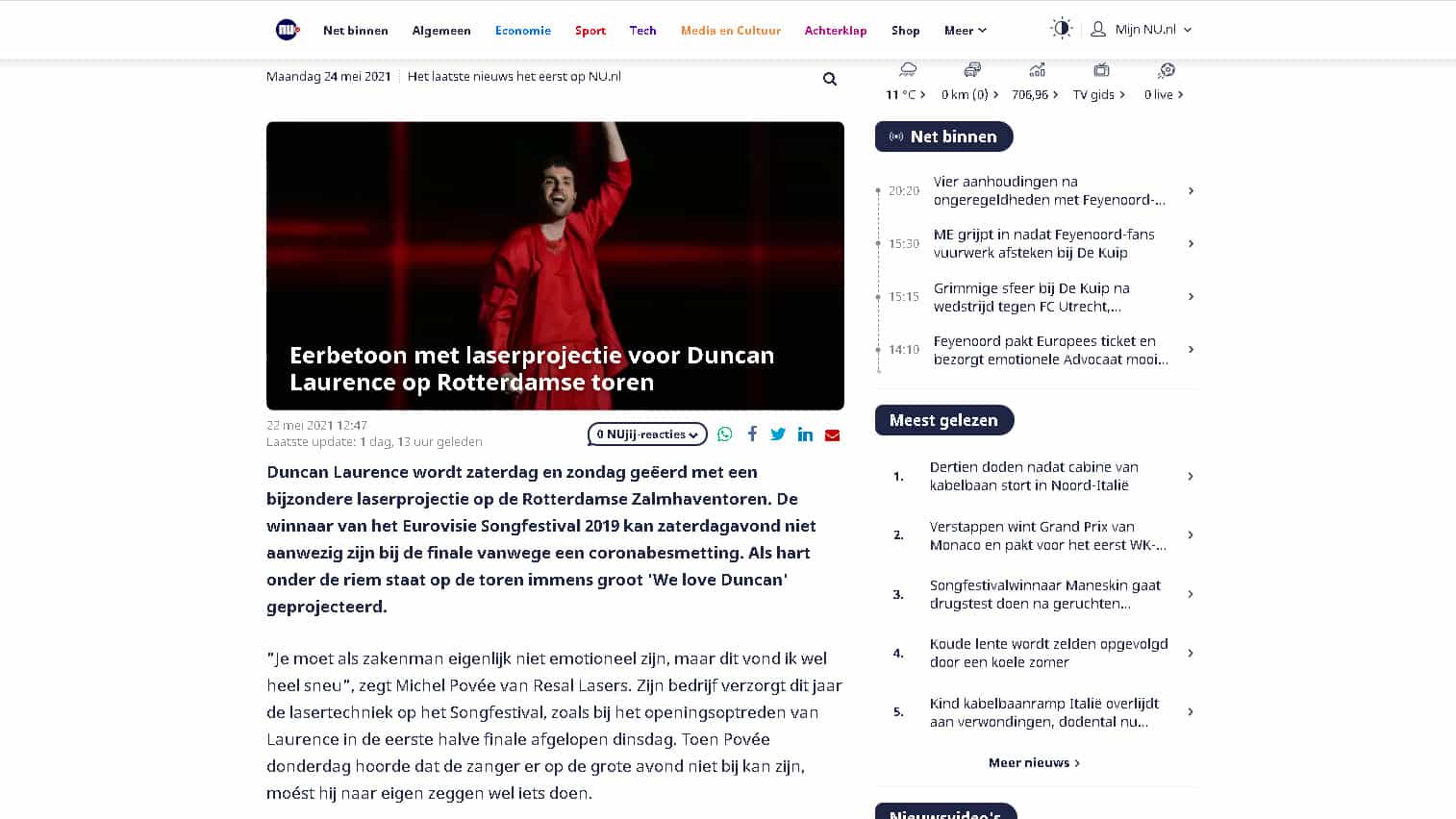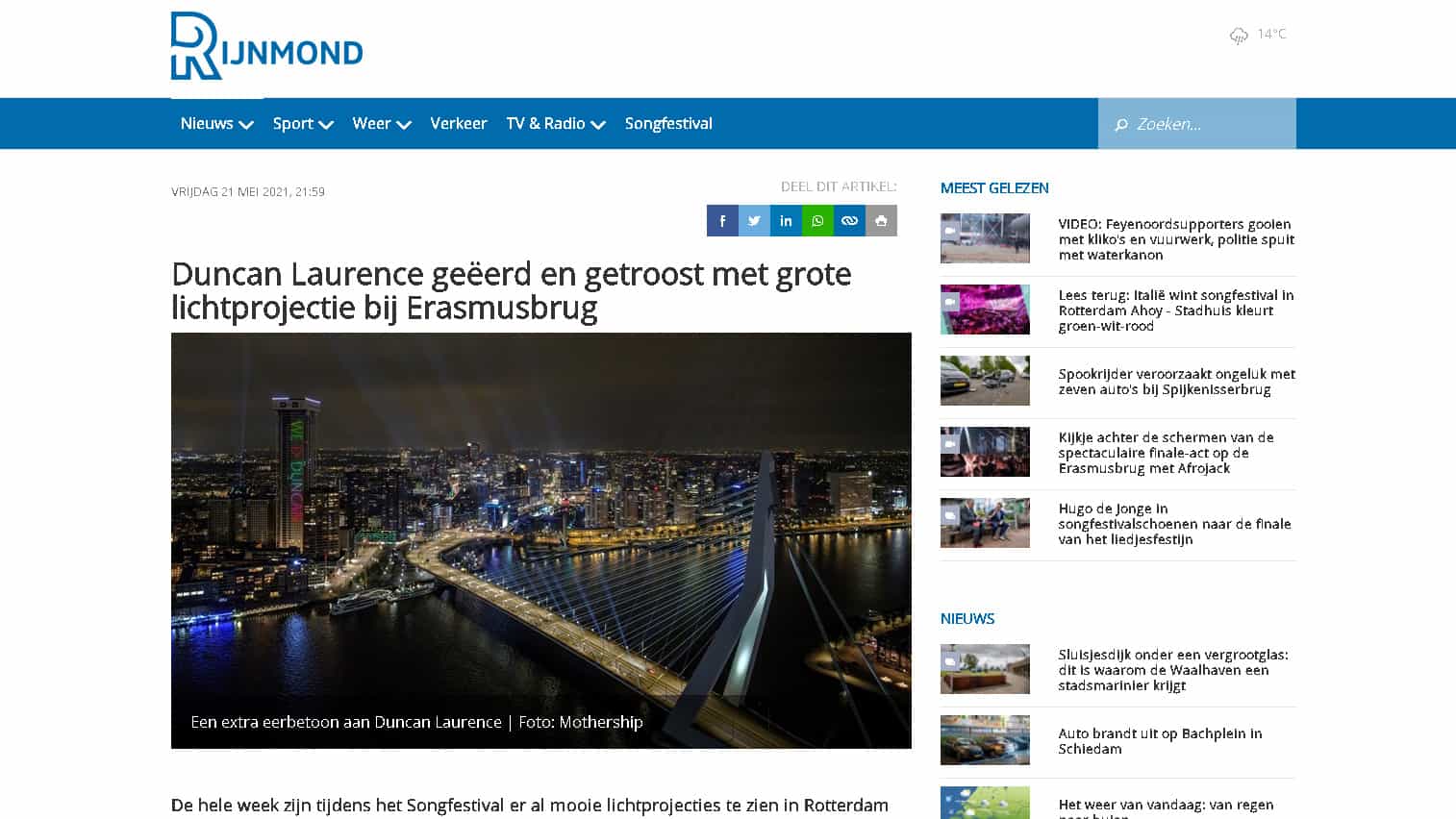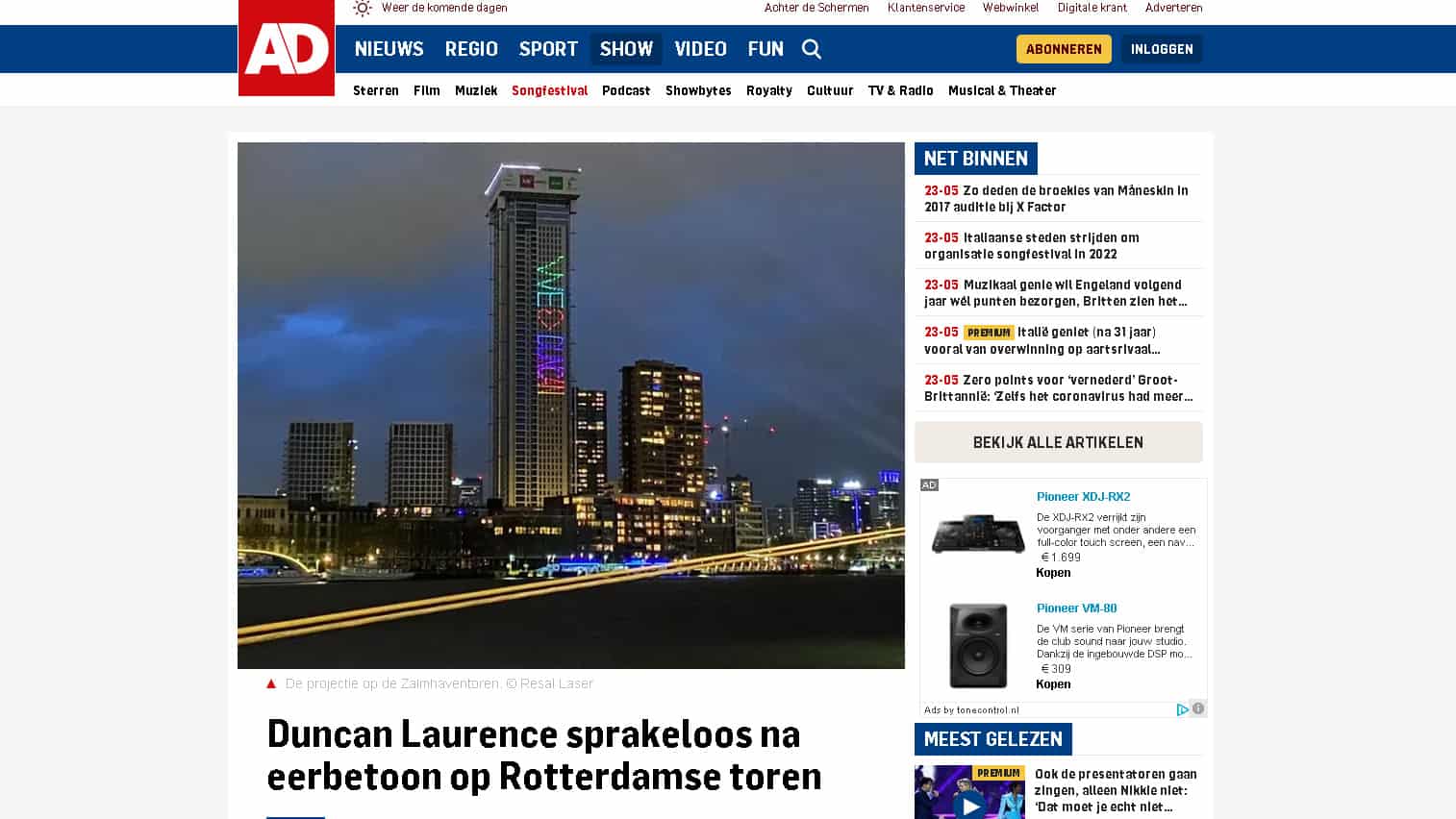In the media
Eurovision Song Contest: ‘Open Up to the Future’
In 2020, the Eurovision Song Contest was supposed to take place in our home town of Rotterdam. Mothership was one of the parties invited by the city to submit a plan to put the ESC plus the city in the (inter)national spotlight. The challenge was to ‘Think Big’ and that’s what we did. We developed a concept that was big enough to attract worldwide attention.
But Covid-19 threw a spanner in the works and the contest was postponed until 2021. As the virus was still with us in 2021, the ESC organization asked us to adapt our concept in such a way that it still had a chance of being realized, despite constantly changing circumstances.
Many months lay between the drafting of the plan and its possible realization; in this period it was supposed to become clear whether singing together, with an audience, was even going to be possible.
Concept
There was a chance that the presence of an audience at the contest and in the public space would be undesirable. In our modified plan, we started from the worst possible scenario – after all, expanding and adding is more fun than reducing and cutting back. The ESC was going to be on, in whatever form.
In this situation, solidarity was especially important. The virus threatened to drive us apart, but we pointed to the resilience our city has shown for centuries.
Rotterdam once rose like a phoenix from the ashes: it’s a city that has recovered from a heavy blow before. The Erasmus Bridge that connects both parts of the city is the ultimate symbol of freedom regained: Rotterdam locals call it ‘the Swan’.
And Open Up to the Future also starts from freedom: the freedom to be who you are; to do what you want, to come together and celebrate. Openly and courageously, we faced that future together. We visualized this in a concept that consisted of three parts: ‘De aftelklok’ (The Countdown Clock), ‘De zwaan vliegt’ (The Swan Flies) and ‘Rock the Roof’.
The Swan Flies
Musicians often sing the praise of birds as symbols of freedom. In their song Over de muur (Over the Wall), Dutch Band Klein Orkest sings that ‘only birds can fly from East to West Berlin’; Steve Miller wants to Fly Like an Eagle until he is free; and in Blackbird, The Beatles encourage us to ‘take these broken wings and learn to fly’.
There were so many reasons to give our Swan its freedom at that time. To affirm our cohesion, the bird took off from Rotterdam, like an old-fashioned, tried and tested homing pigeon.
If artists and audiences were not allowed to come to Rotterdam, then our Swan would fly, to all of the cities that participated, throughout Europe!
And that’s why 64 white beams of light shone from the bridge in the dark hours of the evening. They formed the wings of the Swan, about to take off. Slowly the rays took on the movement of a slow wing beat that continued and enchanted the city with its rhythm: the rhythm of the ESC, the rhythm of the music we share.
Mayor Aboutaleb made the Swan fly for the first time in a live television broadcast, saying ‘Let’s give the Swan its wings’.
And she subsequently flew every night during the ESC, from 10 p.m. to midnight, as part of the broadcast of the ESC final, the sensational images finding their way all over the world!
Rock the Roof!
In the run-up to this wonderful moment, the city and its residents prepared themselves musically. Especially in these complex times, it’s important to look back at what has already been achieved. Via the present, we take what history teaches us with us into the future. In the case of the Eurovision Song Contest, there was no better way to do this than by re-performing the hits from the past. And what did this prove? That their quality was undiminished! The richness of this specific musical history is something to be proud of. It was an honour that our city was allowed to demonstrate this.
The concept was simple but effective: Icons meet Icons! Rotterdam has large and tall buildings with flat roofs on both banks of the Maas River. We had already seen that these lent themselves exceptionally well to musical performances. The city turned out to be a fantastic setting for the most beautiful songs from the history of the ESC. Some of the great names from that history performed their winning songs as if they had won the contest only yesterday.
The three selected buildings had huge beams of light crowning their rooftops, the enormous beams visible throughout the city. No one could fail to notice that something special was happening on the roofs of the Maassilo, Hotel New York and the new Depot of Museum Boijmans van Beuningen. Live performances by Lenny Kuhr, Teach-In, Sandra Kim, Helena Paparizou, Lordi and Mans Zelmerlöw were recorded without an audience and broadcast later, during the festival finale. More than 200 million viewers saw the success of the ESC against a background of Rotterdam splendour.



